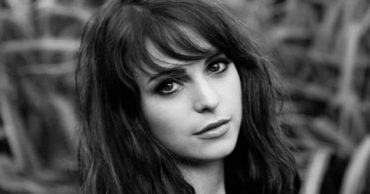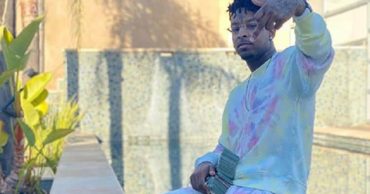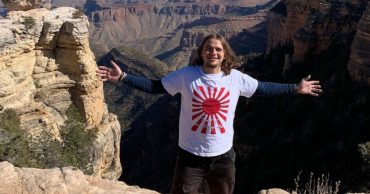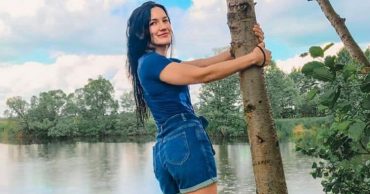It was opening night for the Boston Ballet’s spring season. The Boston Opera House was filled with guests in formal attire-all anticipating Parts in Suite. The program included works by three choreographers: Jorma Elo, Resident Choreographer of the Boston Ballet; Justin Peck, Resident Choreographer of the New York City Ballet; and William Forsythe, internationally-recognized choreographer. The evening’s presentation included the choreographers’ works in Parts in Suite. Bach Cello Suites was choregraphed by Elo, In Creases was choreographed by Justin Peck and Pas/Parts 2018 was choreographed by William Forsythe. Each of the three contributed to a suite of contemporary works exploring ballet’s evolving language of movement.
When the curtain rose for Bach Cello Suites, and cellist Sergey Antonov touched bow to strings with the first notes of Bach, it was the beginning of a magical evening. Antonov won the 2007 Tchaikovsky Competition and his mastery of the music provided a lyrical counterpoint for the dancer’s graceful, precise and stunningly articulate interpretation of the music. Elo’s intuitive choreography proved that the complex linear construction of Bach’s music could indeed be interpreted through movement.
The second work of the suite, In Creases, was performed by eight dancers who were accompanied onstage by duo pianists. Their two concert grand pianos were set at the rear of the stage for the performance of Four Movements for Two Pianos by Philip Glass. Peck’s choreography was a Mondrian-like study in moving geometric patterns-expertly executed by the corps de ballet.
The final work of the evening, Pas/Parts 2018, featuring the collaborative work of Forsythe and Willems immediately established its presence on the stage. At once, Willems electronic music commandingly propelled the audience to a new place. Forsythe’s choreography was brilliant. He expanded upon the partnership established with the Boston Ballet in 2016, adding challenges designed specifically for the company. The original Pas/Parts was choreographed in 1999 for the Paris Opera Ballet, and then revised for the San Francisco Ballet in 2016. This latest expression of Forsythe’s work includes, as he said, “alignments” which “highlight the company’s delightful artistic abilities”. Forsythe noted their extraordinary ability to “graciously perform under pressure” when dancing the “playfully perilous” choreography which Pas/Parts 2018 contains.
Why should the third work of Parts in Suite stand significantly apart from the previous works of the evening? This question requires considerable reflection on the opening night-as a whole. It’s not that the two presented earlier were less than. They were quite splendid. In fact, the lyricism and perfectly coordinated movement and melody of the Bach Cello Suites was truly spectacular-stunningly engaging. Highest praise and well deserved for the company and their cellist. The duo pianists of In Crease performed their Glass composition with aplomb and the dancers interpreted it well, but as one audience member stated, “It wasn’t the most Glass-like music we have come to expect of Glass.” Another audience member noted that one of the duo pianos seemed slightly out of tune, and when two concert grands are paired, they must be equally paired. Perhaps these contributed to a less than stellar reception for some of the more musically-oriented in the audience. But, the Pas/Parts 2018 electronic score immediately set the work in a contemporary, if not futuristic, place. It’s rhythmic drive and sonic environment created a radical audio shift. So radical, and pervasive, that a few audience members left the performance early.
For those who remained to the end, the standing ovation spoke volumes; rewarding Forsythe and Willems for their achievement. Both choreographer and composer expanded the boundaries of what is expected of ballet movement and ballet music. The neoclassical ballet challenged the dancers to dance with strength and power, and clearly defined, eloquent movement.
Forsythe has created a modern ballet dictionary which includes everything wonderful about traditional ballet steps, with complexities of movement that are uniquely Forsythe. His dancers must be bilingual-understanding both French and Forsythe. His dance steps engage every muscle. They are grounded in classical technique and expanded to reflect his modern aesthetic. Willems has purposed electronic music to richly express and showcase Forsythian movements. The twenty sections of the work included Willems’ most varied sounds; such as human vocalizations, whistling, pounding beats and hints of various music genres.
Forsythe and Willems have emerged as a successful collaborative force; creating an athletic and artistic ballet which expands upon 21st century ballet aesthetics. Theirs is an art form for the exceptionally strong and physically aware. It is experienced at the most visceral and visual at the same time, and these are what give it compelling energy.
 Follow Us
Follow Us



